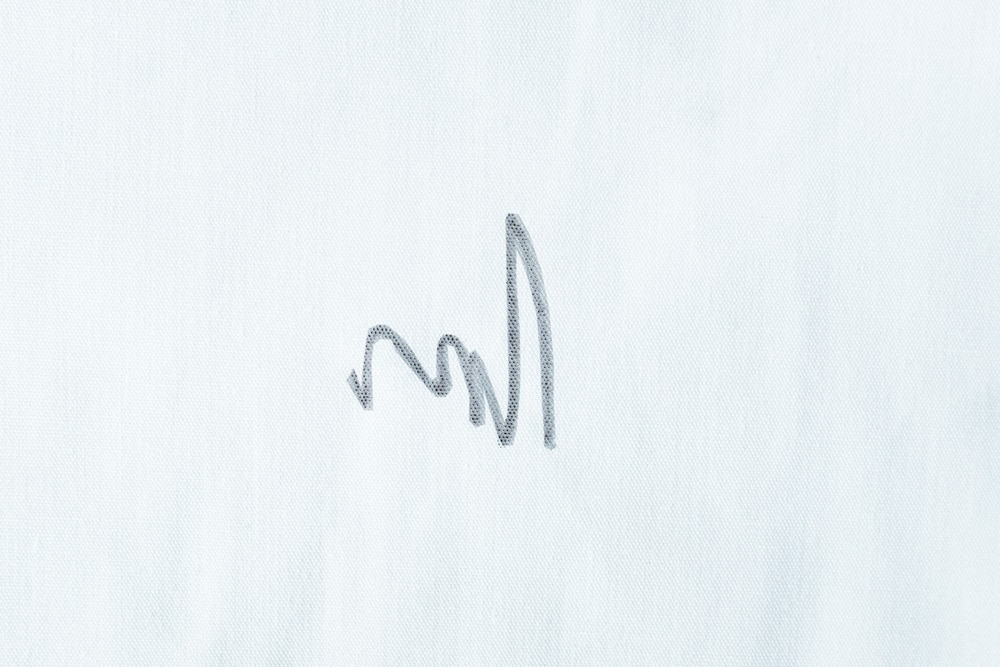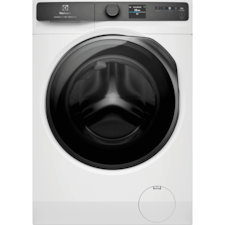Removing tough stains from clothes can be frustrating, especially when you're trying to protect delicate fabrics and preserve vibrant colours. Stains like oil, ink, or even mould can be tricky to tackle without causing damage, particularly on white shirts or coloured garments. If not treated properly, these stains can either set in or fade the material, leaving your favourite clothes looking worn.
This article from Electrolux Thailand will guide you through safe and effective methods on how to remove yellow stains from clothes. Using common household tools like baking soda, dish soap, or specialised stain removers, we’ll explore ways to treat various stains while keeping your fabrics intact.
Whether it’s grease, ink, or paint, you’ll find techniques for removing stubborn stains without compromising your clothes' quality or colour.
A general guide on tough stain removal effectively
When it comes to tough stains, acting quickly is essential to prevent them from setting in. Begin by pretreating the stain as soon as possible using a suitable stain remover or household remedy like dish soap or baking soda. Always test the stain remover on a small, hidden part of the garment to ensure it won’t damage the fabric or fade the colour.
Before proceeding, be sure to read the care label on your clothing. Different fabrics require different treatment methods, so it’s important to follow the instructions carefully. Read the care label to avoid any mishaps. Finally, soak and wash properly, using the recommended water temperature and washing method for best results.
How to remove different kinds of stains on clothes

Different stains require different techniques to ensure they’re removed effectively without damaging your clothes. From oil and ink to mould and blood, each type of stain can be treated with various methods depending on the fabric and the severity of the stain.
In this section, we’ll explore proven methods for tackling specific stains using proper stain removers and household items. Whether it's a grease stain or a stubborn ink blot, you’ll find multiple approaches to get your clothes looking fresh again.
How to remove oil stains from clothes
Oil stains, whether from cooking or automotive grease, can be tough to tackle. Acting quickly is crucial for best results. Here are the steps to effectively remove oil stains from your clothes:
- Blot the excess oil with a paper towel or cloth (avoid rubbing to prevent spreading the stain).
- Sprinkle baking soda or cornstarch on the stain and let it sit for 10–15 minutes to absorb the oil.
- Brush off the powder, then apply a small amount of dish soap, gently working it into the fabric.
- Rinse with warm water, and if the stain persists, repeat the process before washing.
- For stubborn stains, pre-treat the area with a stain remover or a mixture of vinegar and baking soda.
- Allow the garment to soak for 15–30 minutes before washing.
How to remove pen ink from clothes

Ink stains can be difficult to remove, especially once dried. Whether the ink is water-based or oil-based, you can tackle it with the following methods:
- Place a cloth or paper towel underneath the stained fabric to absorb excess ink.
- For water-based ink, blot the stain with a damp cloth, then apply a dish soap and water solution.
- For oil-based ink (such as ballpoint pens), use rubbing alcohol or hand sanitizer by dabbing it on the stain with a cotton ball.
- Gently blot the stain without rubbing to prevent spreading.
- Rinse the garment with cold water and wash as usual.
How to remove yellow stains from white clothes
Yellow stains, especially around the underarms of white shirts, can be quite stubborn. Here’s how to remove them effectively and make your clothes white again:
- Soak the garment in a solution of baking soda, hydrogen peroxide, and water for 30 minutes.
- Gently scrub the stained area with a soft brush.
- Rinse thoroughly, then wash the garment as usual.
- For tougher stains, use a commercial stain remover or oxygen bleach (avoid chlorine bleach on delicate fabrics).
How to get rid of mould on clothes
Mould on clothes can cause damage and pose health risks due to allergens. Follow these steps to remove mould stains effectively:
- Brush off the mould spores outside to prevent them from spreading indoors.
- Soak the garment in white vinegar for at least one hour.
- Scrub the stained area gently with a soft brush to lift the mould.
- Wash the garment in hot water, if safe for the fabric, or according to care instructions.
How to take out blood stains
Blood stains can be particularly tricky, especially if they are not treated immediately. The key to removing them is to act fast before the stain sets. Here’s how to tackle blood stains effectively:
- Rinse with cold water: Start by running cold water through the stain, which helps to dilute the blood and prevent it from bonding with the fabric. Avoid using warm water, as it can cause the stain to set.
- Soak in a mixture of water and mild detergent: After rinsing, soak the stained area in a solution of cold water and a few drops of detergent for 15–30 minutes.
- Apply hydrogen peroxide: For stubborn stains, dab hydrogen peroxide directly onto the stain. Allow it to fizz for a few minutes before blotting it away with a clean cloth.
How to remove paint from clothes
Paint stains can be challenging, especially when they dry. Whether you’re dealing with water-based or oil-based paint, there are methods to remove paint stain from clothes effectively:
- For water-based paint: While the paint is still wet, rinse the fabric under cold water, then apply a small amount of dish soap and gently rub the stain. Rinse and repeat as necessary.
- For oil-based paint: Scrape off any excess dried paint and treat the area with a solvent such as turpentine or rubbing alcohol. Gently blot the stain before washing the garment in warm water.
Other common stubborn stains
Some stains, like coffee, tea, wine, and grass stains, can be particularly difficult to remove. Here are a few methods to tackle these stubborn stains:
- For coffee or tea stains: Blot the stain with a mixture of vinegar and water or apply a stain remover spray before washing the garment.
- For wine stains: Immediately blot the stain with cold water and sprinkle salt on it to absorb the liquid. Then, rinse with a mixture of cold water and vinegar.
- For grass stains: Apply a small amount of laundry detergent or dish soap directly to the stain. Gently scrub it in and let it sit for a few minutes before washing.
Check out the most suitable types of detergent for front load washing machine in our article.
7 common stain removers and their uses
Now that we've covered specific methods for treating different types of stains, it's important to understand the tools that can help you tackle them. There are a variety of household products and specialised cleaners that are highly effective for removing stains, each with its own unique properties.
In this section, we’ll explore some of the most common stain removers, how they work, and the types of stains they’re best suited for.
1. Dish soap
Dish soap is highly effective for oil-based stains, making it a go-to solution for spills involving grease or food oils. It is also gentle enough to be used on most fabrics without causing damage.
- How to use: Mix a small amount of dish soap with warm water and gently rub the solution into the stained area. Rinse with water and repeat if necessary before washing the garment.
2. Baking soda
Baking soda is a versatile stain remover known for its ability to absorb oil and grease. It can be used on a variety of stains, including food, sweat, and odours, making it a handy tool in stain removal.
- How to use: Sprinkle baking soda directly onto the stain and let it sit for 10–15 minutes to absorb the stain. Afterward, brush or vacuum off the powder and wash as usual.
3. White vinegar
White vinegar is a natural solution that effectively cuts through grease and grime. It's especially useful for removing stains like coffee, wine, and mildew while being safe for most fabrics.
- How to use: Mix equal parts white vinegar and water, then apply the mixture to the stain. Let it sit for a few minutes before rinsing and washing the garment.
4. Rubbing alcohol
Rubbing alcohol works well for ink stains and can also be used for some oil-based stains. It evaporates quickly, making it ideal for fabrics that shouldn’t be soaked.
- How to use: Dab a small amount of rubbing alcohol onto the stain with a cotton ball or cloth. Gently blot the area until the stain lifts, then rinse and wash the garment.
5. Hair spray
Hairspray can be an effective household solution for ink stains. The alcohol content helps to dissolve the ink, making it easier to remove.
- How to use: Spray the hair spray directly onto the ink stain and let it sit for a few minutes. Blot the stain with a clean cloth or paper towel before washing the garment.
6. Nail polish remover (with acetone)
Nail polish remover is effective for stubborn ink stains but should be used cautiously, as acetone can damage delicate fabrics.
- How to use: Apply a small amount of nail polish remover with a cotton ball to the stained area. Test on an inconspicuous area of the fabric first, and blot gently to avoid damage. Rinse thoroughly afterward.
7. Bleach
Bleach is a powerful stain remover, particularly for mould stains and other tough stains like coffee or tea. However, it can weaken fabrics if used improperly, so always test it first.
- How to use: Mix bleach with water (follow the instructions for proper dilution) and soak the stained garment. Rinse thoroughly and wash afterward, avoiding bleach on delicate fabrics.
For more garment tips, follow our expert’s advice here:
Simplify stain removal with Electrolux washing machines
Many people struggle with removing tough stains without damaging fabrics. Common issues include lingering stains, fabric fading, and excessive wear from washing. Electrolux washing machines, equipped with advanced features like SensorWash technology, provide a solution by ensuring optimal stain removal while being gentle on clothes.
Electrolux: A trusted brand in home appliances
With over 100 years of experience, Electrolux is known for its commitment to quality and innovation. Their washing machines are designed to address common laundry challenges, such as ineffective stain removal and fabric damage from harsh cycles. Electrolux ensures your clothes are well-cared for, clean, and protected.
Key features of Electrolux washing machines
- SensorWash technology: Automatically detects soil levels and adjusts the cycle for thorough cleaning, preventing over-washing and protecting delicate fabrics.
- Eco-Friendly efficiency: Reduces water and energy use, saving on utility bills without sacrificing cleaning performance.
- Customisable settings: Offers a range of cycles for different fabrics and stain levels, from delicates to heavily soiled items.
By investing in an Electrolux washing machines, you’re not just purchasing a high-quality appliance—you’re gaining peace of mind that your clothes will be cared for and stains will be thoroughly removed with each wash.
Explore our best-selling washing machines:
-
- IntelliDose delivers precise detergent dosage.
- IntelliQuick selects best load based programme.
- SensorWash helps remove up to 53 stains.*
-
- IntelliDose delivers precise detergent dosage.
- IntelliQuick selects best load based programme.
- SensorWash helps remove up to 53 stains.*
-
- SensorWash helps remove up to 53 stains.*
- IntelliQuick selects best load based programme.
- Refresh clothes with vapour, without washing.



